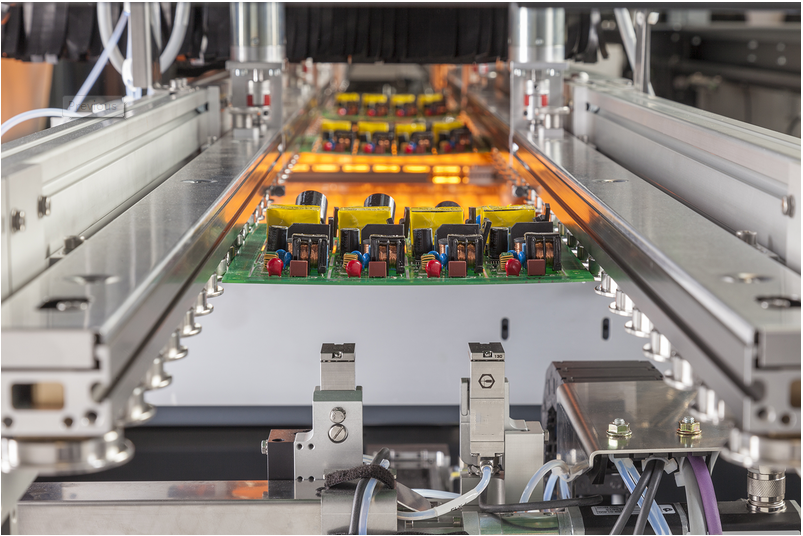What is the difference between lead based and lead-free processes?
Release time:2024-02-26Publisher:Jeenoce
Recently, many friends in the electronics industry have asked, "What is the difference between lead-based and lead-free processes? What are the impacts of such a large price difference on production? How should we choose?" Some friends have been saying that lead-free processes are not as good as lead-based processes, and that single wave soldering cannot be achieved with lead-free processes;
trend
Firstly, let's take a look at the trends of lead and lead-free. With the increasing international environmental requirements, lead-free technology has become an inevitable process in the development of the electronics industry. Although lead-free technology has been implemented for so many years, some companies still use lead-based technology, but it is an inevitable result that lead-free technology completely replaces lead-based technology. However, in some aspects, lead-free technology may not be as effective as lead-based technology, so in the future, we need to study how to better replace lead-based technology with lead-based technology. Wider popularization of environmental protection, achieving a win-win goal of both profitability and environmental protection.
status
Currently, many large domestic companies have not fully adopted lead-free technology but instead adopted lead-based technology to improve reliability. In the locomotive industry, internationally renowned companies such as Ximenzi and Bombardier have not fully adopted lead-free technology for production, but have tried to avoid it as much as possible.
Currently, many professions also believe that there are still many problems that need to be further understood in lead-free technology. For example, Dr. Li Ningcheng, a renowned process expert, also believes that the development of lead-free technology has not yet matured with lead technology. For example, Sn3Ag0.5Cu solder alloy, which was previously used the most in lead-free welding, has recently been found to have some issues with the reliability of solder joints due to its slightly lower content. Some people suggest increasing the mass fraction of Cu to 1% -2%, But now there are often no products with this type of solder alloy on the market. At the same time, the reliability data of lead-free soldering electronic products is far less abundant than those produced by lead soldering.

compare
Lead based technology has a development history of over a hundred years. After a large number of experts in lead based technology research, it has good welding reliability and stability, and mature production technology, which mainly depends on the characteristics of lead based solder alloys.
Lead solder alloys have low melting points, low welding temperatures, and minimal thermal damage to electronic products; Lead solder alloy has a small wetting angle, good weldability, and a low possibility of false soldering at product solder joints; The toughness of solder alloy is good, and the vibration resistance of the formed solder joints is better than that of lead-free solder joints.
From the current research results, it is found that the melting point temperature of alternative alloys for lead-free welding technology is higher than that of existing tin lead alloys. For example, from the perspective of the "tin silver copper" alloy that is currently more likely to be widely accepted in the industry, the melting point is 217 ℃, which will greatly reduce the process window in the welding process. In theory, the reduction of the process window is from 37 ℃ for tin lead solder to 23 ℃. In fact, the reduction of the process window is much larger than the theoretical value. Due to the inaccuracy of our temperature measurement method in practical work, as well as the limitations of DFM and the need to take into account the appearance of the solder joints, the reflow soldering process window is actually only about 14 ℃.
Not only does the reduction of the process window bring huge challenges to process personnel, but the increase in welding temperature also makes the welding process more difficult. One of them is the oxidation phenomenon during high-temperature welding. We all know that the oxide layer can make welding difficult, wetting poor, and cause virtual welding. The degree of oxidation is determined by factors such as inventory conditions and time, pre-treatment (such as dehumidification and baking), and the thermal energy (temperature and time) borne during the preheating (or constant temperature) stage of welding, in addition to sufficient control of the incoming material of the device.
Due to the significant reduction in lead free welding process window compared to lead containing welding process window, some people in the industry believe that the use of nitrogen welding environment may be necessary. Nitrogen welding can reduce the surface tension of molten tin and increase its wettability. It can also prevent oxidation caused during preheating. But nitrogen is not omnipotent, it cannot solve all the problems caused by lead-free. Especially it is impossible to solve the problems already caused by the welding process.
In the current reflow soldering equipment, the furnace design using the principle of forced hot air convection is the mainstream. Hot air convection technology has strong controllability in heating rate and constant temperature ability. Weak in terms of heating efficiency and uniformity, as well as repeatability. These weaknesses are not seriously reflected in lead containing technology and can still be accepted in many cases. With the narrowing of the lead-free technology process window and higher requirements for repeatability, hot air convection technology will be challenged.

